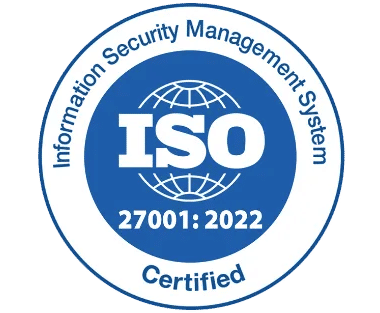The 5 Key Stages of the Asset Management Lifecycle Explained

What Is the Asset Management Lifecycle?
Before we explore the stages, let’s define the concept. The asset management lifecycle is a structured process that tracks an asset from its initial conception to its final disposal. It applies to physical assets (like machinery, vehicles, or buildings) as well as intangible ones (like software licenses or intellectual property). The goal? To ensure every asset delivers maximum value over its lifespan while minimizing costs and risks.
Stage 1: Planning
What It Is
The planning stage is the foundation of the asset management lifecycle. It’s where you define your needs, set goals, and create a strategy for acquiring and managing assets. Think of it as the blueprint that guides every subsequent decision.
Why It Matters
Without proper planning, you risk overbuying, underutilizing, or choosing assets that don’t align with your business objectives. For example, a logistics company might plan to invest in a new fleet of electric delivery vans to meet sustainability goals, but without assessing routes, driver needs, and charging infrastructure, the investment could flop.
How It Works
- Needs Assessment: Identify what assets you need and why. Are you replacing outdated equipment or expanding capacity?
- Budgeting: Determine how much you can spend and forecast long-term costs (e.g., maintenance, operation).
- Risk Analysis: Evaluate potential risks, like supply chain delays or regulatory changes.
- Goal Setting: Align asset choices with business priorities, such as cost reduction or scalability.
Tips for Success
- Use data (e.g., usage reports, market trends) to inform decisions.
- Involve stakeholders—finance, operations, IT—to align priorities.
- Build flexibility into your plan for unexpected changes.
Stage 2: Acquisition
What It Is
Acquisition is the stage where planning becomes action. It’s about procuring the assets you’ve identified—whether through purchasing, leasing, or building—and ensuring they meet your specifications.
Why It Matters
The acquisition phase sets the tone for an asset’s lifespan. A smart purchase can save money and boost performance, while a rushed one can saddle you with high maintenance costs or obsolescence. For instance, buying a cheap printer might seem economical until it breaks down monthly.
How It Works
- Vendor Selection: Research suppliers for quality, reliability, and support.
- Negotiation: Secure favorable terms, like warranties or bulk discounts.
- Procurement: Finalize the purchase or lease, ensuring compliance with budgets and regulations.
- Delivery & Setup: Oversee installation and initial testing.
Tips for Success
- Prioritize quality over short-term savings.
- Test assets before full deployment to catch issues early.
- Document everything—contracts, warranties, specs—for future reference.
Stage 3: Operation
What It Is
The operation stage is where assets earn their keep. This is the period of active use, where they contribute to your business’s goals—whether generating revenue, supporting production, or enabling services.
Why It Matters
Effective operation maximizes an asset’s value. Poor management here—like overworking equipment or neglecting training—can shorten its life and inflate costs. For example, a factory running machines 24/7 without breaks might see breakdowns skyrocket.
How It Works
- Deployment: Assign assets to their intended roles (e.g., vehicles to routes, software to teams).
- Monitoring: Track performance metrics like uptime, output, or energy use.
- Optimization: Adjust usage to improve efficiency or meet demand spikes.
- Training: Ensure staff know how to operate assets correctly.
Tips for Success
- Set clear performance benchmarks (e.g., 95% uptime).
- Use IoT or software for real-time tracking.
- Regularly review usage to spot inefficiencies.
Stage 4: Maintenance
What It Is
Maintenance keeps assets running smoothly. It includes preventive care (like oil changes), repairs, and upgrades to extend lifespan and performance.
Why It Matters
Neglecting maintenance is like skipping oil changes on your car—eventually, it’ll cost you more in breakdowns or replacements. Proactive upkeep, on the other hand, reduces downtime and preserves value.
How It Works
- Preventive Maintenance: Schedule routine checks (e.g., servicing HVAC every six months).
- Reactive Maintenance: Fix issues as they arise (e.g., replacing a broken motor).
- Predictive Maintenance: Use data (e.g., vibration sensors) to anticipate failures.
- Upgrades: Modernize assets to keep them competitive.
Tips for Success
- Build a maintenance calendar and stick to it.
- Invest in sensors or software for predictive insights.
- Train staff to spot early warning signs.
Stage 5: Disposal
What It Is
Disposal is the final stage, where assets are retired, sold, recycled, or scrapped. It’s about closing the loop responsibly and extracting any remaining value.
Why It Matters
Improper disposal can lead to legal issues, environmental harm, or lost opportunities (e.g., selling a machine vs. scrapping it). Done right, it recoups costs and aligns with sustainability goals—a growing priority in 2025.
How It Works
- Evaluation: Assess if the asset can be reused, sold, or recycled.
- Decommissioning: Safely remove it from service (e.g., wiping data from IT assets).
- Disposal Method: Choose selling, donating, recycling, or scrapping.
- Documentation: Record the process for audits or compliance.
Tips for Success
- Explore resale markets before scrapping.
- Partner with certified recyclers for eco-friendly disposal.
- Keep records to prove compliance.
Tying It All Together: Why the Lifecycle Matters
The five stages—Planning, Acquisition, Operation, Maintenance, and Disposal—form a continuous cycle. Each phase feeds into the next, and weaknesses in one can ripple across all. A rushed acquisition might strain maintenance budgets, while poor operation shortens an asset’s life, complicating disposal. By mastering each stage, you create a system that’s efficient, cost-effective, and adaptable.
Challenges and Solutions
Data Overload
Challenge: Tracking usage, maintenance schedules, and performance metrics can generate overwhelming amounts of information, leaving teams unsure where to focus.
Solution: Centralize data with user-friendly tools or dashboards that highlight key insights, simplifying decision-making.
Budget Constraints
Challenge: Limited funds, especially for smaller organizations, make it tough to balance costs across acquisition, maintenance, and disposal.
Solution: Prioritize thorough planning and preventive care to stretch resources further and avoid expensive emergencies.
Resistance to Change
Challenge: Staff may resist new processes, preferring familiar routines, which slows adoption and improvement efforts.
Solution: Offer early training, communicate benefits clearly—like reduced downtime or easier workflows—and celebrate small wins to build momentum.
Looking Ahead: The Future of Asset Management
Conclusion
The asset management lifecycle isn’t just a framework—it’s a mindset that empowers you to maximize your resources every day of the year with Asset Management 365. By optimizing its five key stages—Planning, Acquisition, Operation, Maintenance, and Disposal—you can turn assets into strategic advantages. The principles are simple yet powerful: plan thoughtfully, acquire strategically, operate seamlessly, maintain diligently, and dispose wisely.
Frequently Asked Questions
What is the asset management lifecycle?
The asset management lifecycle refers to the entire process of managing an asset from acquisition to disposal, ensuring it delivers maximum value throughout its life.
Why is asset management important?
Effective asset management improves operational efficiency, reduces costs, extends asset life, and supports strategic decision-making.
How does asset lifecycle management benefit organizations?
It helps optimize asset use, minimize downtime, ensure compliance, and reduce total cost of ownership.
What tools are used in asset lifecycle management?
Organizations use Asset Management Software (AMS), IT Asset Management (ITAM) systems, and CMMS platforms for automation and tracking.
How does maintenance fit into the lifecycle?
Maintenance ensures assets are operating efficiently, extends their lifespan, and reduces unexpected failures or costly repairs.









_svxLrd-8yH.png)

_2VYSFUTN5m.png)

_JiluXJRGNl.svg)

_2djTKNocf.png)





_Rapo0hRMBy.png)

















